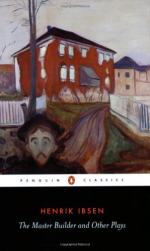|
This section contains 424 words (approx. 2 pages at 400 words per page) |

|
Realism
In the late nineteenth century, playwrights turned away from what they considered the artificiality of melodrama to a focus on the commonplace in the context of everyday contemporary life. They rejected the flat characterizations and unmotivated violent action typical of melodrama. Their work, along with much of the experimental fiction written during that period, adopted the tenets of realism, a new literary movement that took a serious look at believable characters and their sometimes problematic interactions with society.
To accomplish this goal, realistic drama focuses on the commonplace and eliminates the unlikely coincidences and excessive emotionalism of melodrama. Dramatists like Henrik Ibsen discard traditional sentimental theatrical forms as they chronicle the strengths and weaknesses of ordinary people confronting difficult social problems, like the restrictive conventions nineteenth-century women suffered. Writers who embraced realism use settings and props that reflect their characters' daily lives and realistic dialogue that replicates...
|
This section contains 424 words (approx. 2 pages at 400 words per page) |

|




